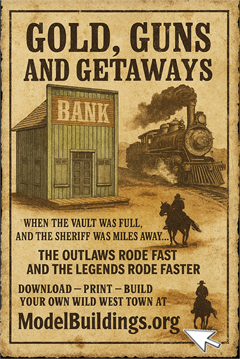Everything on model trains, model railroads, model railways, locomotives, model train layouts, scenery, wiring, DCC and more. Enjoy the world's best hobby... model railroading!
Engine Stalls On Straights
Lester sent in this question:
“I bought a Bachmann engine that must be more than 30 years old and tried it out on my basic oval test track which has a straight piece on each side. It runs ok on the curves but is starts to stall on the straights. My voltmeter showed no power loss. I then cleaned the track, but it still runs ok on the curves and slows a stall on the straights. It baffles me. Any thoughts?”
To add a suggestion or comments to assist Lester, please use the COMMENTS link under this post. No login required.
9 Responses to Engine Stalls On Straights
Leave a Reply















Have you checked the track guage on the straight bits?
John yes straights are in gauge.
Lester,
I suspect the contacts at the back of the wheels is where the problem is. While gong around the curve the wheels are “squeezed” and make firmer contact with wipers. On the straight the “squeeze” is not there and contact is sporadic at best.
Check the backs of the wheels and the wipes for accumulated dirt and dust.Carefully clean both with Isoproponal Alcohol being very careful to not bend the wipers.
thanks Hervey i’ll investigate that. it makes sense
If this is a Spectrum diesel you may need to remove the shell and trucks to clean the frame and the bronze-phosphor spring on the truck. Oh, yeah, don’t lose the tiny screw holding the truck.
Phil, Hervey and John all have good points. The only other thing I’d check is make sure the wheels are firmly being held on their axles. I have a similar issue and found a set of wheels were loose on the axle. Hope you find the issue. Good luck..
The longer a conductor is, the more resistance it has. Normally not a problem, but this syndrome can be rectified by adding extra supply booster points in addition to the initial supply point. Also solder joint fishplates as sometimes dirt can accumulate at connections.
Hi Lester, It’s always possible that the engine simply has dirty wheels; the contact would be made with the tracks due to the flanges on the curves, but once it hits the straights, the engine runs on the central portion of the rim which may be dirty. Just a thought. Good luck! Chris.
thanks all, great advice. thanks for caring